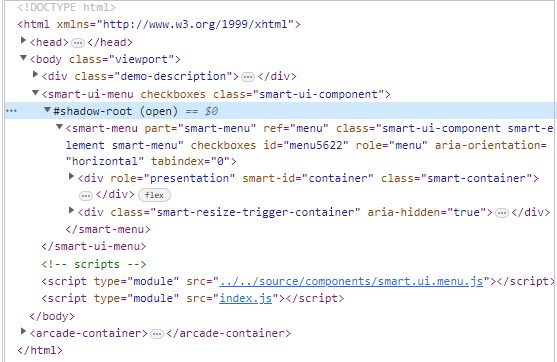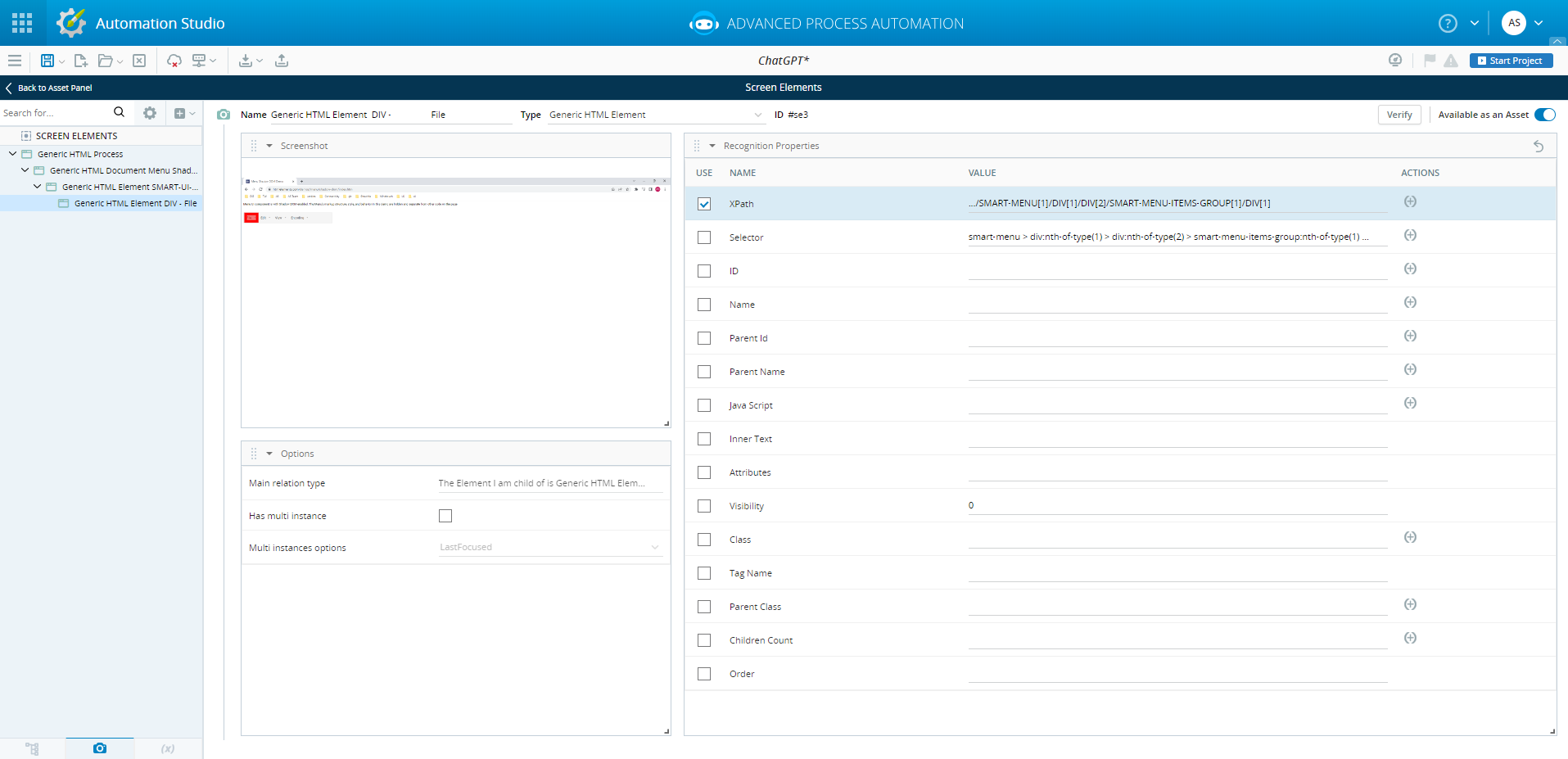Using Generic HTML with Shadow DOM
From version 7.9, elements inside the shadow DOM (open or closed) can be captured.
Shadow DOM allows hidden DOM trees to be attached to elements in the regular DOM tree using a concept called "shadow trees". Each element with a shadow DOM has its own shadow tree, which is separate from the main DOM tree of the document. The shadow tree starts with a shadow root and contains the encapsulated HTML, CSS, and JavaScript associated with the element. Shadow DOMs can be nested.
For example: https://www.htmlelements.com/demos/menu/shadow-dom/index.htm

The menu component is shadow DOM-enabled and its markup structure, style, and behavior are hidden and separate from other code on the page.

Version 7.9 supports capturing the elements inside the shadow DOM.

The target elements can be recognized by XPath or Selector. The shadow DOM element includes …/ at the start of the XPath value.
You can invoke the both the Locate, and Execute Script with Result functions on the captured shadow DOM element.

